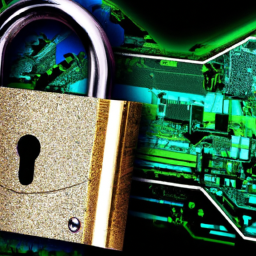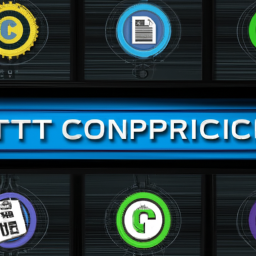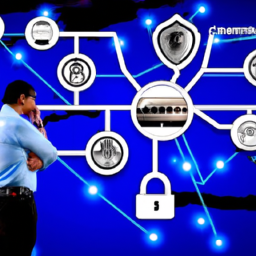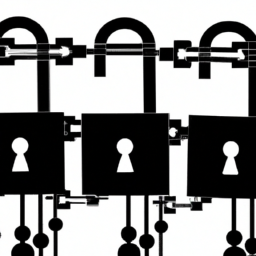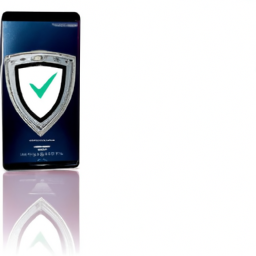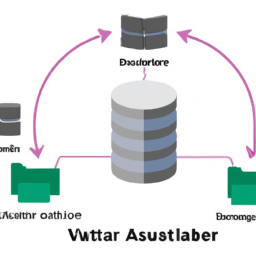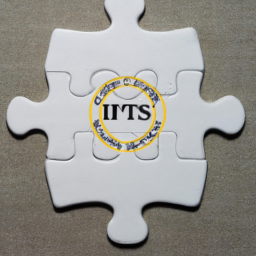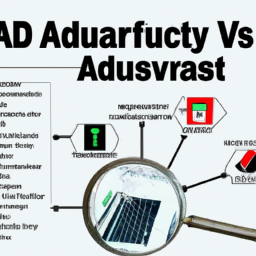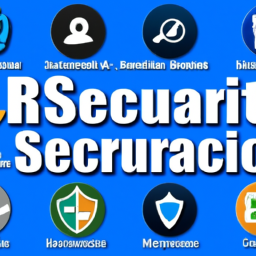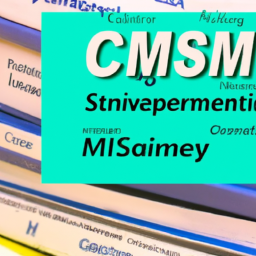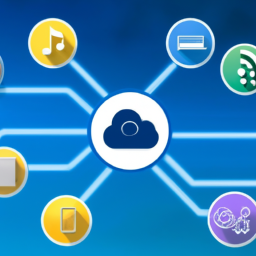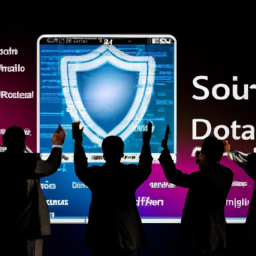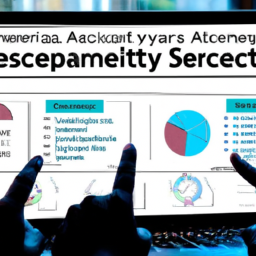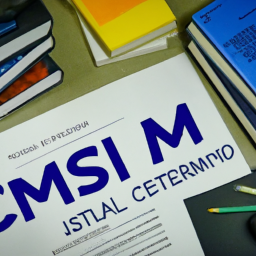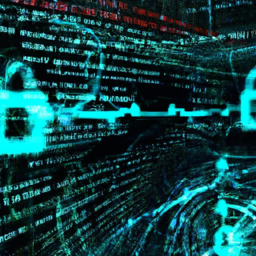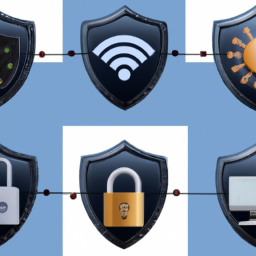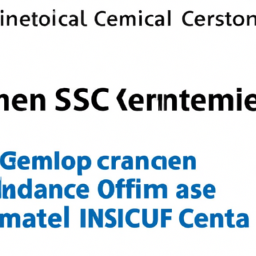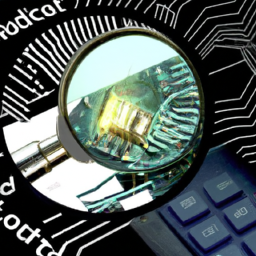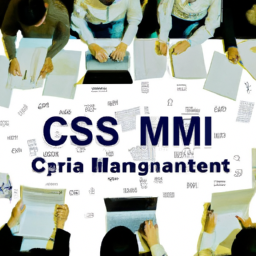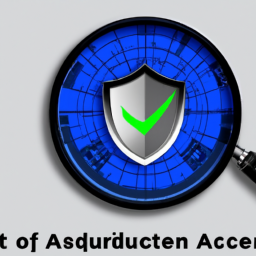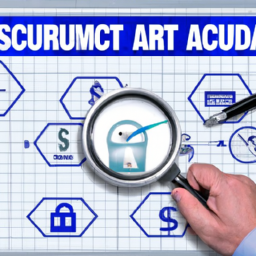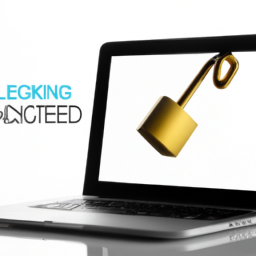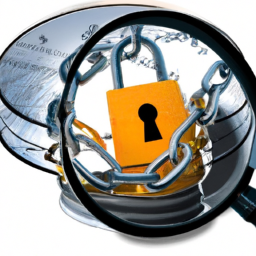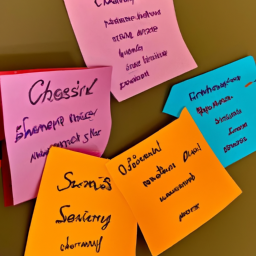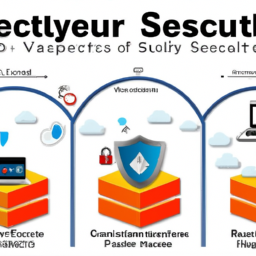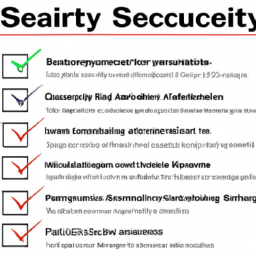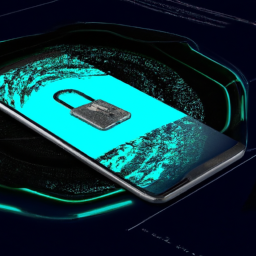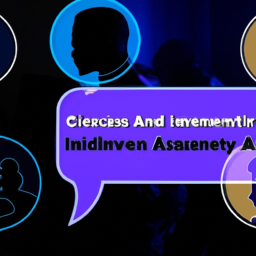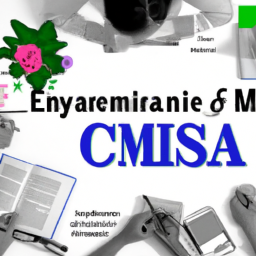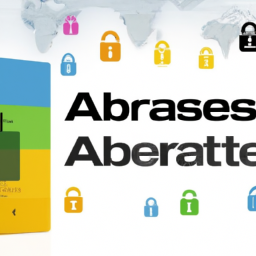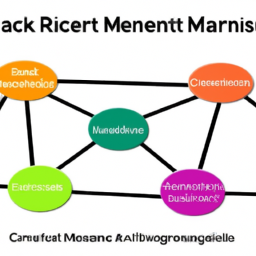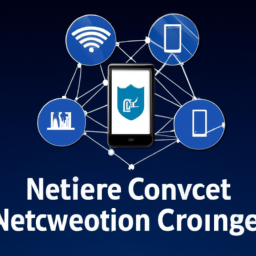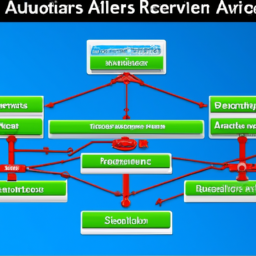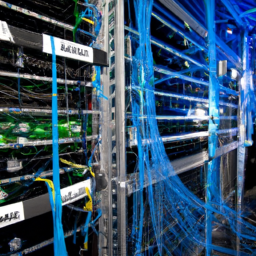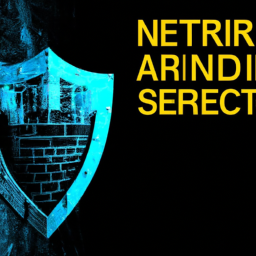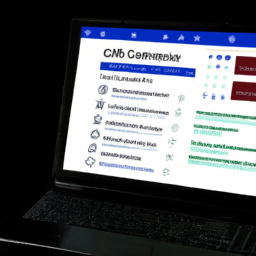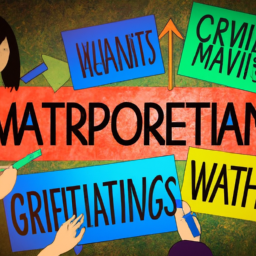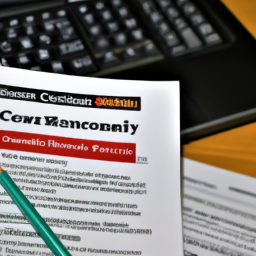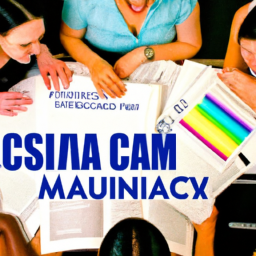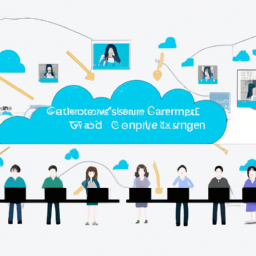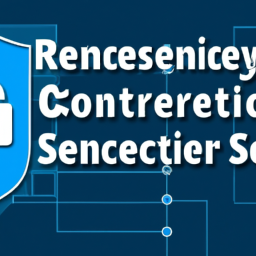In the realm of security management, knowledge is power. Just as a skilled artist selects the perfect brush for each stroke, organizations must carefully choose the frameworks that will guide their security efforts. With a myriad of options available, navigating the landscape of security management frameworks can be overwhelming.
But fear not, for this article will serve as your compass, guiding you through the vast sea of choices.
In this comprehensive exploration, we will delve into various security management frameworks, each offering a unique approach to safeguarding valuable assets. From the globally recognized ISO 27001 standard, which sets the benchmark for information security management, to the NIST Cybersecurity Framework’s holistic approach to managing cyber risks, we will uncover the strengths and weaknesses of each framework.
Additionally, we will unravel the intricacies of COBIT, the framework that aligns IT governance with security management, and explore the CIS Controls, designed to enhance cybersecurity resilience. Furthermore, we will assess the CSA Security Trust Assurance and Risk (STAR) Program, which evaluates cloud security, and examine how ITIL Security Management integrates security into IT service management.
So, fasten your seatbelts, as we embark on this enlightening journey to decipher the world of security management frameworks, empowering you to make informed decisions to fortify your organization’s defense against threats.
Key Takeaways
- ISO 27001 is a globally recognized standard for information security management and involves a systematic approach to identify, assess, and manage information security risks.
- The NIST Cybersecurity Framework consists of five core functions: identify, protect, detect, respond, and recover, providing a comprehensive approach to managing cyber risks.
- COBIT improves IT governance and management for organizations, aligning objectives, managing risks, integrating processes, and ensuring compliance.
- The CIS Controls framework organizes security management practices into 20 specific actions, prioritizing security efforts, allowing flexibility, and incorporating industry best practices to enhance cybersecurity resilience.
ISO 27001: Understanding the Global Standard for Information Security Management
ISO 27001 is the global standard for keeping your information secure, so you can sleep peacefully at night knowing your data is in good hands. Understanding ISO 27001 certification is crucial for organizations that want to establish a robust information security management system.
This certification provides a framework for identifying, assessing, and managing information security risks. Implementing ISO 27001 standards involves a systematic approach, starting with defining a security policy and conducting a risk assessment. It requires establishing controls to mitigate identified risks, monitoring their effectiveness, and continuously improving the security management system.
ISO 27001 certification demonstrates to stakeholders that an organization has implemented best practices to protect sensitive information. Transitioning to the subsequent section about the NIST Cybersecurity Framework, it is important to note that both frameworks address different aspects of information security management.
NIST Cybersecurity Framework: A Comprehensive Approach to Managing Cyber Risks
When it comes to effectively managing cyber risks, you can rely on the NIST Cybersecurity Framework to provide a comprehensive approach that paints a vivid picture of your organization’s cyber landscape.
The NIST Cybersecurity Framework is a risk management approach that helps organizations identify, assess, and prioritize their cyber risks. It provides a structured and repeatable process for managing these risks, ensuring that all aspects of the organization’s cybersecurity are considered.
The framework consists of five core functions: identify, protect, detect, respond, and recover. Each function is further broken down into categories and subcategories, providing a detailed roadmap for organizations to follow.
By using the NIST Cybersecurity Framework, organizations can conduct a thorough cyber risk assessment and develop a robust cybersecurity strategy.
Moving forward to the next topic, COBIT aligns IT governance and security management seamlessly.
COBIT: Aligning IT Governance and Security Management
COBIT seamlessly aligns IT governance and security management, providing organizations with a comprehensive approach to effectively manage their cybersecurity risks. Interestingly, a survey conducted by ISACA found that 79% of organizations reported improved IT governance and management after implementing COBIT.
Here are four key benefits of COBIT:
-
Alignment of Objectives: COBIT ensures alignment between IT goals and overall business objectives, enabling organizations to prioritize security measures based on their impact on business outcomes.
-
Risk Management: COBIT provides a structured framework for identifying, assessing, and mitigating cybersecurity risks, helping organizations make informed decisions about resource allocation and risk tolerance.
-
Process Integration: By integrating IT governance and security management processes, COBIT allows organizations to streamline operations, reduce duplication, and improve efficiency.
-
Compliance Assurance: COBIT provides a set of controls and best practices that help organizations comply with regulatory requirements and industry standards, enhancing their overall security posture.
With COBIT’s robust framework in place, organizations can confidently navigate the complex landscape of IT governance and security management.
Now, let’s explore how CIS Controls enhance cybersecurity resilience.
CIS Controls: Enhancing Cybersecurity Resilience
In this discussion, you’ll explore the CIS Controls framework, which provides a comprehensive set of best practices for enhancing cybersecurity resilience. You’ll learn about the implementation of the Top 20 Critical Security Controls, designed to prioritize and address the most significant security risks.
Additionally, you’ll gain insight into the benefits and limitations of the CIS Controls framework. This will allow you to make informed decisions regarding its adoption and effectiveness in your organization’s cybersecurity strategy.
Understanding the CIS Controls Framework
The CIS Controls Framework organizes security management practices into 20 specific actions. Understanding control implementation is crucial for effectively measuring security effectiveness. The framework provides a comprehensive approach to managing and mitigating security risks.
Here are four key aspects of the CIS Controls Framework:
-
Prioritization: The framework helps organizations prioritize their security efforts based on the potential impact and likelihood of an attack.
-
Flexibility: It allows organizations to adapt the controls to their specific needs and requirements, ensuring a tailored approach to security management.
-
Continuous Improvement: The framework emphasizes the need for ongoing monitoring, assessment, and improvement of security controls to address evolving threats.
-
Industry Best Practices: The CIS Controls Framework incorporates industry-accepted best practices, ensuring organizations follow recognized standards for effective security management.
By implementing the top 20 critical security controls outlined in the framework, organizations can enhance their cybersecurity resilience and protect against a wide range of threats.
Implementing the Top 20 Critical Security Controls
To effectively enhance your cybersecurity resilience and protect against a wide range of threats, it’s time to roll up your sleeves and start implementing the top 20 critical security controls outlined in the CIS Controls Framework.
These controls provide a comprehensive roadmap for organizations to establish a strong security posture. By implementing security controls, you can ensure that your systems and data are protected from potential vulnerabilities and attacks.
The controls cover a range of areas including inventory and control of hardware assets, continuous vulnerability management, secure configuration for hardware and software, and controlled use of administrative privileges.
Following these best practices for security management will not only help you meet compliance requirements but also strengthen your overall security posture.
Now, let’s explore the benefits and limitations of the CIS Controls Framework.
Benefits and Limitations of CIS Controls
Enhancing your cybersecurity resilience with the implementation of the CIS Controls Framework provides a robust roadmap for protecting your systems and data, but it is crucial to understand the potential benefits and limitations of these controls.
| Benefits of Implementing CIS Controls | Limitations of Using CIS Controls |
|---|---|
| Standardized Approach: CIS Controls offer a standardized approach to cybersecurity, ensuring that you cover all essential security areas and reduce the risk of overlooking critical vulnerabilities. | Resource Intensive: Implementing CIS Controls can be resource-intensive, requiring significant time, effort, and financial investment. It may involve acquiring new technologies, training staff, and conducting regular assessments and audits. |
| Continuous Improvement: CIS Controls provide a framework for continuous improvement, allowing you to regularly assess and update your security measures to adapt to evolving threats. | Complexity: The complexity of implementing and managing CIS Controls can be overwhelming, especially for organizations with limited resources or expertise in cybersecurity. It may require dedicated personnel and specialized knowledge to effectively implement and maintain these controls. |
| Compliance and Assurance: Implementing CIS Controls can help demonstrate compliance with industry standards and regulations, providing assurance to stakeholders, clients, and regulatory bodies. | Lack of Flexibility: The prescriptive nature of CIS Controls may not align with the specific needs and priorities of every organization. It may limit flexibility in choosing alternative security approaches or technologies that may better suit your unique environment. |
Understanding the benefits and limitations of CIS Controls is essential to make informed decisions about their implementation. Moving forward, let’s explore the CSA Security Trust Assurance and Risk (STAR) Program and how it can help assess cloud security.
CSA Security Trust Assurance and Risk (STAR) Program: Assessing Cloud Security
Immerse yourself in the depths of the CSA Security Trust Assurance and Risk (STAR) Program, where you can navigate the murky waters of cloud security assessment. This program is a comprehensive framework aimed at assessing the effectiveness of cloud security controls and evaluating vulnerabilities.
It provides a set of criteria and guidelines that organizations can use to ensure the security of their cloud environments. The STAR Program allows businesses to gain visibility into the security posture of cloud service providers and make informed decisions about their cloud adoption strategy. It offers a standardized approach to assessing cloud security, enabling organizations to compare different providers and choose the one that best meets their security requirements.
By evaluating the security controls and practices of cloud service providers, the STAR Program helps organizations mitigate risks and enhance their overall security posture. Transitioning to the subsequent section about ‘itil security management: integrating security into it service management’, organizations can leverage the insights gained from the STAR Program to effectively integrate security into their IT service management processes.
ITIL Security Management: Integrating Security into IT Service Management
In this discussion, you’ll explore the key points of ITIL Security Management. You’ll learn about the introduction to ITIL Security Management. You’ll also learn about the key processes and activities involved in this framework. Additionally, you’ll discover the benefits and challenges of implementing ITIL Security Management.
By understanding these key points, you’ll gain a comprehensive understanding of how security is integrated into IT Service Management using the ITIL framework.
Introduction to ITIL Security Management
ITIL Security Management provides organizations with a structured framework to effectively manage and mitigate IT security risks. By integrating security measures into IT service management, organizations can ensure that their systems and data are protected from potential threats.
One of the key processes in ITIL Security Management is conducting a risk assessment. This involves identifying potential risks, evaluating their potential impact, and determining appropriate measures to mitigate those risks. By conducting regular risk assessments, organizations can proactively identify vulnerabilities and implement necessary security controls.
Additionally, ITIL Security Management includes activities such as developing security policies and procedures, implementing access controls, and monitoring security incidents. These processes and activities help organizations establish a comprehensive security management system.
Moving on to the next section about key processes and activities in ITIL Security Management, organizations can further enhance their security posture.
Key Processes and Activities in ITIL Security Management
In the previous section, we discussed the basics of ITIL Security Management. Now, let’s dive deeper into this topic and explore the key processes and activities involved in ITIL Security Management. These processes and activities are crucial for ensuring the security of an organization’s IT infrastructure and assets.
To provide a clear understanding, let’s take a look at the following table that outlines some of the key processes and activities in ITIL Security Management:
| Process/Activity | Description |
|---|---|
| Risk Management | Identifying, assessing, and managing risks to IT systems and assets. |
| Access Management | Controlling and monitoring user access to IT services and resources. |
| Incident Management | Responding to and resolving security incidents in a timely manner. |
| Security Governance | Establishing and maintaining security policies, standards, and procedures. |
These processes and activities work together to create a robust security framework that protects an organization from potential threats and vulnerabilities. By implementing ITIL Security Management, organizations can enhance their overall security posture and mitigate risks effectively. Now, let’s explore the benefits and challenges of implementing ITIL Security Management.
Benefits and Challenges of Implementing ITIL Security Management
By implementing ITIL Security Management, you can reap numerous advantages, such as enhanced protection against potential threats and vulnerabilities, as well as improved overall security posture. However, it is important to acknowledge the challenges that may arise during the implementation process.
One of the main benefits of implementing ITIL Security Management is the ability to align security practices with business objectives. This integration allows for a more efficient and effective security framework that can adapt to changing business needs. Additionally, ITIL Security Management provides a structured approach to risk management, ensuring that potential risks are identified and mitigated in a timely manner.
However, implementing ITIL Security Management can also present challenges. These challenges include resistance to change from employees, the need for significant investment in resources and training, and the complexity of integrating ITIL Security Management into existing processes and systems.
To overcome these challenges, organizations should develop a comprehensive implementation strategy that includes clear communication, stakeholder engagement, and ongoing monitoring and evaluation.
Frequently Asked Questions
What are the key differences between ISO 27001 and the NIST Cybersecurity Framework?
When comparing ISO 27001 and the NIST Cybersecurity Framework, it’s important to understand their key differences.
One interesting statistic to consider is that ISO 27001 is an international standard adopted by over 160 countries, while the NIST Cybersecurity Framework is primarily used in the United States.
In terms of key differences, ISO 27001 focuses on information security management systems, while the NIST Cybersecurity Framework provides a flexible framework for managing cybersecurity risks.
How does COBIT help organizations align IT governance and security management?
COBIT helps organizations align IT governance and security management by providing a comprehensive framework that addresses the importance of aligning security management with business objectives. It emphasizes the integration of IT governance and risk management into the overall organizational structure.
By implementing COBIT, organizations can ensure that their security management strategies are in line with business goals, enabling them to effectively manage risks and protect their valuable assets. This alignment is crucial for achieving a balance between security and business objectives and ensuring the overall success of the organization.
Can you provide examples of the CIS Controls and how they enhance cybersecurity resilience?
One example of how CIS controls enhance cybersecurity resilience is through the implementation of control 5: Secure Configuration of Hardware and Software. By ensuring that all hardware and software systems are securely configured, organizations can mitigate the risk of unauthorized access and prevent the exploitation of vulnerabilities.
This control includes activities such as regularly updating and patching systems, disabling unnecessary services, and implementing strong access controls. By following these practices, organizations can significantly enhance their cybersecurity resilience and protect their critical assets from potential threats.
What are the main components of the CSA Security Trust Assurance and Risk (STAR) Program?
The CSA STAR Program, or Security Trust Assurance and Risk Program, consists of several key components.
These include the Cloud Controls Matrix (CCM), which provides a framework for assessing the security posture of cloud providers.
Another component is the Consensus Assessments Initiative Questionnaire (CAIQ), which helps organizations evaluate the security capabilities of cloud providers.
Additionally, the STAR Certification provides independent validation of a cloud provider’s security controls and practices.
Overall, the CSA STAR Program is a comprehensive approach to assessing and managing security risks in cloud computing.
How does ITIL Security Management integrate security into IT service management?
Managing security in IT service management can be challenging, but ITIL security management provides best practices to address these challenges. According to a study by PwC, organizations that implemented ITIL security management experienced a 30% reduction in security incidents.
ITIL integrates security by focusing on risk management, incident response, and continuous improvement. It emphasizes the importance of aligning security with business objectives and ensuring that security is integrated into all stages of the IT service lifecycle.
Conclusion
After exploring different security management frameworks, it becomes evident that each framework offers a unique approach to addressing information security challenges.
ISO 27001 provides a global standard for managing information security, while the NIST Cybersecurity Framework offers a comprehensive approach to managing cyber risks.
COBIT aligns IT governance and security management, and CIS Controls enhance cybersecurity resilience.
The CSA Security Trust Assurance and Risk Program assesses cloud security, and ITIL Security Management integrates security into IT service management.
Investigating the truth of these theories adds depth and complexity to our understanding of security management.




